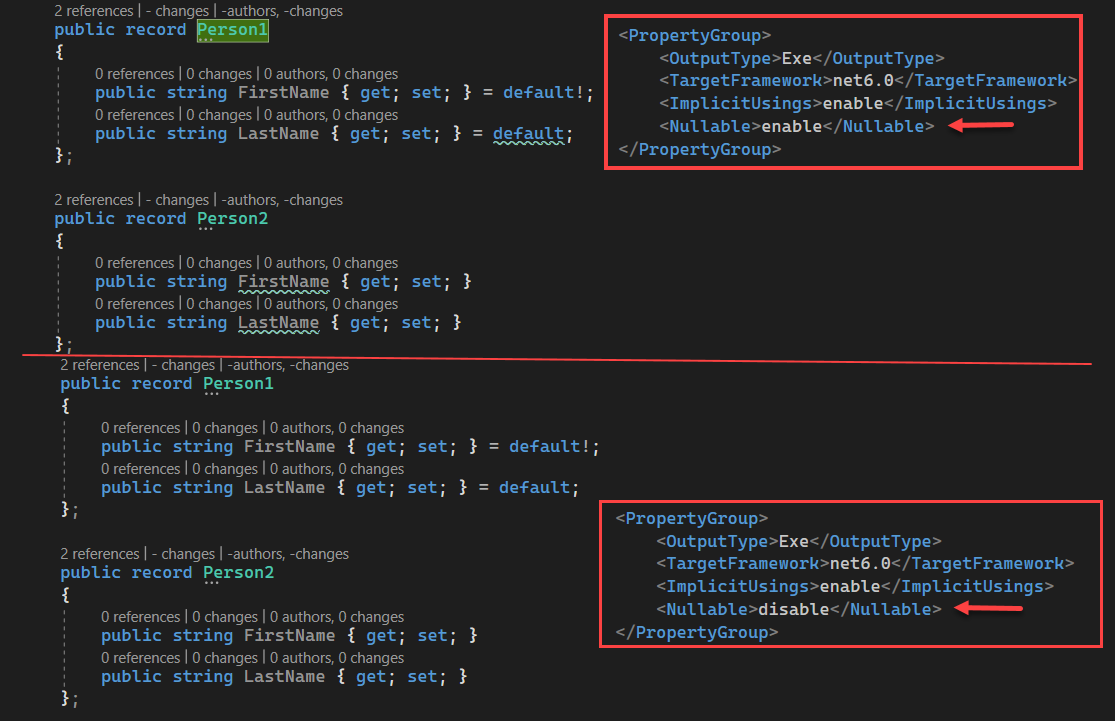
Hi @T.Zacks
As per this article
Default values
The following categories of variables are automatically initialized to their default values:
Static variables.
Instance variables of class instances.
Array elements.
The default value of a variable depends on the type of the variable and is determined as follows:
For a variable of a value_type, the default value is the same as the value computed by the value_type’s default constructor (§8.3.3).
For a variable of a reference_type, the default value is null.
Note: Initialization to default values is typically done by having the memory manager or garbage collector initialize memory to all-bits-zero before it is allocated for use. For this reason, it is convenient to use all-bits-zero to represent the null reference.
However, if you don't provide default value then you will get warning.
Check this article for more insights.
https://rijsat.com/2021/12/31/resolving-warning-non-nullable-property-must-contain-a-non-null-value-in-net-6/




